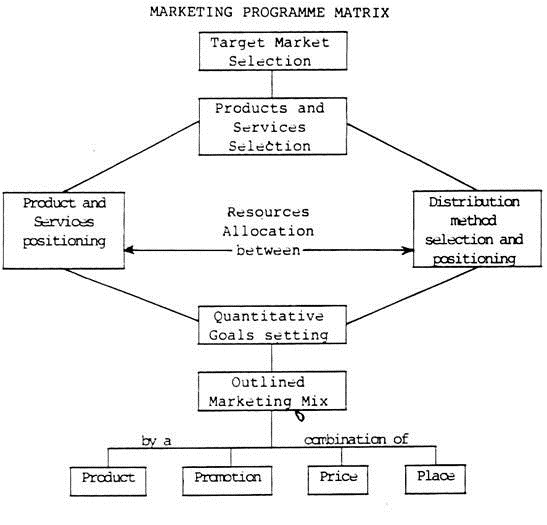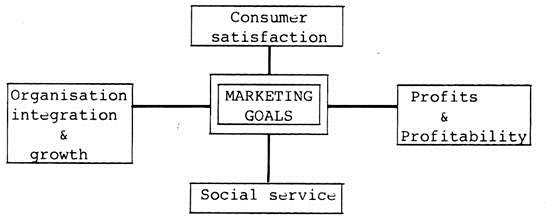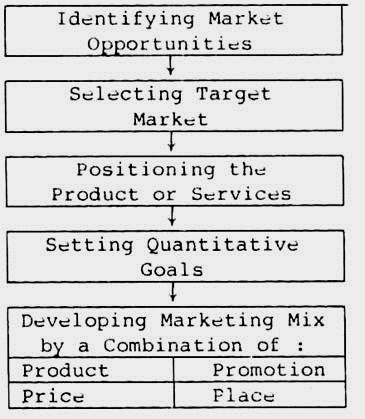Some of the frequently asked exam questions on marketing concepts are as follows:
Q.1. What do you mean by the term marketing research?
Ans. The term marketing research relates to the methodology of gathering, reporting, and analysing facts concerning any phase of the marketing activity. It is a very wide term in its concept and application, and includes different aspects such as product, consumer, market, dealer, price, etc.
The term may be defined as the systematic attempt to get the information which is useful in solving marketing problems (making marketing decisions). Philip Kotler defines marketing research as a systematic problem analysis, model building, and fact finding for the purpose of improved decision-making and control in the marketing of goods and services.
It is, thus, a kind of exhaustive research for the study of all facts relevant to any problem in the field of marketing.
It embraces all research activities associated with the management of marketing function such as:
1. Research en products and services,
2. Research on markets,
3. Research on sales methods and policies, and
4. Research on advertising, business economics, exports and other ancillary activities.
Q.2. What are the goals or objectives of marketing?
Ans. The marketing goals are a part of the company’s overall objectives. Peter F. Drucker views that the purpose of a business is to create customer. Marketing is the basic and important function in a business entity which, through on analysis of internal and external environments, guides the company to achieve marketing objectives as well as the company objectives.
In trying to meet the customer needs and providing satisfaction a customer seeks, a business firm has to make sane fundamental decisions. Broadly speaking, these decisions relate to product, place, proration and price. The goals of a marketing function are identified with these decisions having been properly put to actions.
Again, the profits and profitability of a company depend on the satisfactory volume of sales consistent with the margin on the products and services and with the consumer satisfaction. So, the primary objective of a marketing function is to retain the existing customers and to reach new customers. This is possible only when a perfect co-ordination is maintained between the needs of the customers and their satisfaction.
To sum up, the goals of a marketing function are:
(1) To increase the volume of sales by means of product policy, price policy, marketing channels policy, distribution policy, etc.;
(2) To increase the net profits of the company by an appropriate blend of the policies and strategies as against the parameters listed at (1);
(3) To ensure growth of the enterprise by portraying the product image and corporate image before the public and the consumers; and
(4) To develop social consciousness through highest standard of quality of goods and services and provision of such goods which are socially desirable.
The goals or objectives of marketing can be condensed in a chart below:
Q.3. What is marketing planning?
Ans. “Marketing planning is the work of setting up of objectives for marketing activity and of determining and scheduling the steps necessary to achieve objectives” (American Marketing Association).
We can, therefore, state that marketing planning involves three basic steps as follows:
(1) The establishment of marketing objectives (which may be market expansion, market diversification, product diversification, distribution system improvements, etc.);
(2) The identification, determination, and specification of marketing activities (which may be product profile, product design, advertising media selection, retail and/or wholesale distribution method, variable pricing technique, transportation mode selection, etc.); and
(3) The preparation of a planning document including a statement of the major planning premises upon which the entire marketing plan is based in carder to show:
(i) The company’s own strengths and weaknesses,
(ii) The company’s potential opportunities in the market place, and
(iii) The company’s resources at command and their allocation to the different sub-activities of its marketing set-up.
All implementation plans for important business areas like marketing, new products, research and development, manufacturing, and finance start with the market-place for the reason that the sales set into motion and support all other company operations.
Robert W. Ferrell considers ‘customer orientation’ as the fundamental concept that directs the establishment and application of a business planning process with its related activities.
For this reason, he advocates that marketing planning is the area which should be uppermost in the development of strategic company planning, To support this view, Ferrell continues to state that market factors are needed to be examined during the overall premising stage and many basic questions about the marketing objectives are required to be answered in establishing the final overall company objectives.
Thus, the groundwork for market planning involves many major marketing questions to be answered.
The overall marketing planning can be illustrated as follows:
Q.4. Define marketing programme with the help of a diagram.
Ans.Philip Kotler defines marketing programs as “a set of policy decisions on the level, allocation, and mix of marketing efforts”. It is, thus, a part of marketing planning and policy making. In other words, we can state that a marketing programme presupposes the existence of a marketing plan of a company. Marketing programme is a means for attaining the marketing objectives.
After the marketing objectives are determined by a company, a marketing programme is prepared by means of:
(1) Identifying and defining the activities to be performed;
(2) Outlining the course of action in carrying out these predefined and pre-determined activities consistent with the time-frame and
(3) Directing the marketing personnel to follow the charted course of action towards the achievement of goals.
The marketing programme scenario can be described in the following chart: 
The marketing programs of a business concern may be drawn on an annual or half-year basis.
The implementation of a marketing programme takes into consideration three important factors or parameters:
(i) Marketing efforts,
(ii) Marketing allocation and
(iii) Market responsiveness.
These are discussed below:-
Marketing Efforts:
These represent those activities which are undertaken by the marketing management to increase the volume and value of sales as well as to penetrate and enter sate other territories and places which were not hitherto covered by the company’s marketing mission.
The marketing efforts can be analysed from two aspects:
(1) Level of marketing effort and
(2) Degree of effectiveness in the marketing effort.
While the marketing effort level refers to the marketing department’s drive, initiative and creative endeavour and requires monetary resources of command, the marketing effectiveness denotes the degree of efficiency attained by marketing management through the proper utilisation of monetary, human, and physical resources.
The sales and other corporate objectives, therefore, necessarily depend on these two vital aspects.
Marketing Allocation:
This refers to allocation of human, physical, and monetary resources to the various marketing efforts that have been designed by the marketing department. It involves the determination of the quantitative inputs such as men, facilities and money for necessary distribution among the products, market segments, customer segments and sales areas.
Marketing Responsiveness:
This constitutes an assessment of the reactions and responses in marketing as a result of marketing efforts and activities undertaken. This gives a feed-back information to the marketing management for feed-forward actions in the marketing functions.
According to Philip Kotler, marketing responsiveness analysis is a tool to understand and gauge the behaviour of sales and customers with respect to alternative levels, mixes; and allocation of the marketing efforts.

